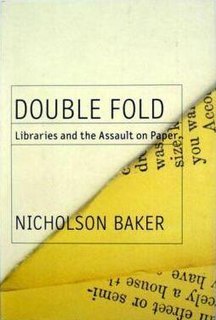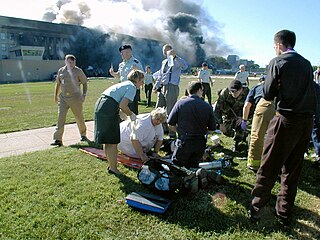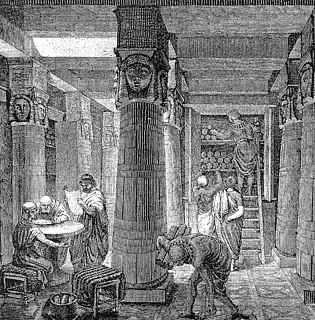Related Research Articles
Time management is the process of planning and exercising conscious control of time spent on specific activities, especially to increase effectiveness, efficiency, and productivity. It involves the balancing of various demands upon a person relating to work, social life, family, hobbies, personal interests, and commitments with the finite nature of time. Using time effectively gives the person "choice" on spending or managing activities at their own time and expediency. Time management may be aided by a range of skills, tools, and techniques used to manage time when accomplishing specific tasks, projects, and goals complying with a due date. Initially, time management referred to just business or work activities, but eventually, the term broadened to include personal activities as well. A time management system is a designed combination of processes, tools, techniques, and methods. Time management is usually a necessity in any project management as it determines the project completion time and scope.
Evaluation is a systematic determination of a subject's merit, worth and significance, using criteria governed by a set of standards. It can assist an organization, program, design, project or any other intervention or initiative to assess any aim, realisable concept/proposal, or any alternative, to help in decision-making; or to ascertain the degree of achievement or value in regard to the aim and objectives and results of any such action that has been completed. The primary purpose of evaluation, in addition to gaining insight into prior or existing initiatives, is to enable reflection and assist in the identification of future change. Evaluation is often used to characterize and appraise subjects of interest in a wide range of human enterprises, including the arts, criminal justice, foundations, non-profit organizations, government, health care, and other human services. It is long term and done at the end of a period of time.
In the broadest sense, cultural resource management (CRM) is the vocation and practice of managing heritage assets, and other cultural resources such as contemporary art. It incorporates Cultural Heritage Management which is concerned with traditional and historic culture. It also delves into the material culture of archaeology. Cultural resource management encompasses current culture, including progressive and innovative culture, such as urban culture, rather than simply preserving and presenting traditional forms of culture.
Program evaluation is a systematic method for collecting, analyzing, and using information to answer questions about projects, policies and programs, particularly about their effectiveness and efficiency. In both the public and private sectors, stakeholders often want to know whether the programs they are funding, implementing, voting for, receiving or objecting to are producing the intended effect. While program evaluation first focuses around this definition, important considerations often include how much the program costs per participant, how the program could be improved, whether the program is worthwhile, whether there are better alternatives, if there are unintended outcomes, and whether the program goals are appropriate and useful. Evaluators help to answer these questions, but the best way to answer the questions is for the evaluation to be a joint project between evaluators and stakeholders.
The Lunar and Planetary Institute (LPI) is a scientific research institute dedicated to study of the Solar System, its formation, evolution, and current state. The Institute is part of the Universities Space Research Association (USRA) and is supported by the Science Mission Directorate of the National Aeronautics and Space Administration (NASA). Located at 3600 Bay Area Boulevard in Houston, Texas, the LPI maintains an extensive collection of lunar and planetary data, carries out education and public outreach programs, and offers meeting coordination and publishing services. The LPI sponsors and organizes several workshops and conferences throughout the year, including the Lunar and Planetary Science Conference (LPSC) held in March in the Houston area.
The International Federation of Library Associations and Institutions (IFLA) is the leading international body representing the interests of people who rely on libraries and information professionals. An independent, non-governmental, not-for-profit organization, IFLA was founded in Scotland in 1927 and maintains headquarters at the National Library of the Netherlands in The Hague. IFLA sponsors the annual IFLA World Library and Information Congress, promoting universal and equitable access to information, ideas, and works of imagination for social, educational, cultural, democratic, and economic empowerment. IFLA also produces several publications, including IFLA Journal.
The State Historic Preservation Office (SHPO) is a state governmental function created by the United States federal government in 1966 under Section 101 of the National Historic Preservation Act (NHPA). The purposes of a SHPO include surveying and recognizing historic properties, reviewing nominations for properties to be included in the National Register of Historic Places, reviewing undertakings for the impact on the properties as well as supporting federal organizations, state and local governments, and private sector. States are responsible for setting up their own SHPO; therefore, each SHPO varies slightly on rules and regulations. To link these differences with the SHPOs, the National Conference of State Historic Preservation Officers (NCSHPO) was created as a “point of contact” according to the National Historic Preservation Act.

A school library is a library within a school where students, staff, and often, parents of a public or private school have access to a variety of resources. The goal of the school library media center is to ensure that all members of the school community have equitable access "to books and reading, to information, and to information technology." A school library media center "uses all types of media... is automated, and utilizes the Internet [as well as books] for information gathering." School libraries are distinct from public libraries because they serve as "learner-oriented laboratories which support, extend, and individualize the school's curriculum... A school library serves as the center and coordinating agency for all material used in the school."
Stakeholder analysis is the process of assessing a system and potential changes to it as they relate to relevant and interested parties (stakeholders). This information is used to assess how the interests of those stakeholders should be addressed in a project plan, policy, program, or other action. Stakeholder analysis is a key part of stakeholder management. A stakeholder analysis of an issue consists of weighing and balancing all of the competing demands on a firm by each of those who have a claim on it, in order to arrive at the firm's obligation in a particular case. A stakeholder analysis does not preclude the interests of the stakeholders overriding the interests of the other stakeholders affected, but it ensures that all affected will be considered.

In library and archival science, preservation is a set of preventive conservation activities aimed at prolonging the life of a record, book, or object while making as few changes as possible. Preservation activities vary widely and may include monitoring the condition of items, maintaining the temperature and humidity in collection storage areas, writing a plan in case of emergencies, digitizing items, writing relevant metadata, and increasing accessibility. Preservation, in this definition, is practiced in a library or an archive by a librarian, archivist, or other professional when they perceive a record is in need of maintenance.

Double Fold: Libraries and the Assault on Paper is a non-fiction book by Nicholson Baker that was published in April 2001. An excerpt appeared in the July 24, 2000 issue of The New Yorker, under the title "Deadline: The Author's Desperate Bid to Save America's Past." This exhaustively researched work details Baker's quest to uncover the fate of thousands of books and newspapers that were replaced and often destroyed during the microfilming boom of the 1980s and 1990s. Double Fold is a controversial work and is not meant to be objective. In the preface, Baker says, "This isn't an impartial piece of reporting", and The New York Times characterized the book as a "blistering and thoroughly idiosyncratic attack".
Oral history preservation is the field that deals with the care and upkeep of oral history materials, whatever format they may be in. Oral history is a method of historical documentation, using interviews with living survivors of the time being investigated. Oral history often touches on topics scarcely touched on by written documents, and by doing so, fills in the gaps of records that make up early historical documents.
Paul Conway is associate professor in the University of Michigan School of Information and has worked with Yale University and Duke University Universities after starting his career at the Gerald R. Ford Presidential Library. His research and educational work focuses primarily on digital preservation and electronic media. He has published extensively throughout his career on library preservation, conservation issues, and education of library and archives personnel.

Disaster medicine is the area of medical specialization serving the dual areas of providing health care to disaster survivors and providing medically related disaster preparation, disaster planning, disaster response and disaster recovery leadership throughout the disaster life cycle. Disaster medicine specialists provide insight, guidance and expertise on the principles and practice of medicine both in the disaster impact area and healthcare evacuation receiving facilities to emergency management professionals, hospitals, healthcare facilities, communities and governments. The disaster medicine specialist is the liaison between and partner to the medical contingency planner, the emergency management professional, the incident command system, government and policy makers.
Preservation survey is the process of collecting and analyzing data about the physical condition of library materials.

Library science is an interdisciplinary or multidisciplinary field that applies the practices, perspectives, and tools of management, information technology, education, and other areas to libraries; the collection, organization, preservation, and dissemination of information resources; and the political economy of information. Martin Schrettinger, a Bavarian librarian, coined the discipline within his work (1808–1828) Versuch eines vollständigen Lehrbuchs der Bibliothek-Wissenschaft oder Anleitung zur vollkommenen Geschäftsführung eines Bibliothekars. Rather than classifying information based on nature-oriented elements, as was previously done in his Bavarian library, Schrettinger organized books in alphabetical order. The first American school for library science was founded by Melvil Dewey at Columbia University in 1887.
Outcomes theory provides the conceptual basis for thinking about, and working with outcomes systems of any type. An outcomes system is any system that: identifies; prioritizes; measures; attributes; or hold parties to account for outcomes of any type in any area.

The conservation and restoration of books, manuscripts, documents and ephemera is an activity dedicated to extending the life of items of historical and personal value made primarily from paper, parchment, and leather. When applied to cultural heritage, conservation activities are generally undertaken by a conservator. The primary goal of conservation is to extend the lifespan of the object as well as maintaining its integrity by keeping all additions reversible. Conservation of books and paper involves techniques of bookbinding, restoration, paper chemistry, and other material technologies including preservation and archival techniques.

Disaster preparedness in museums, galleries, libraries, archives and private collections, involves any actions taken to plan for, prevent, respond or recover from natural disasters and other events that can cause damage or loss to cultural property. 'Disasters' in this context may include large-scale natural events such as earthquakes, flooding or bushfire, as well as human-caused events such as theft and vandalism. Increasingly, anthropogenic climate change is a factor in cultural heritage disaster planning, due to rising sea levels, changes in rainfall patterns, warming average temperatures, and more frequent extreme weather events.
Communicative planning is an approach to urban planning that gathers stakeholders and engages them in a process to make decisions together in a manner that respects the positions of all involved. It is also sometimes called collaborative planning among planning practitioners or collaborative planning model.
References
- ↑ Darling, Pamela W. "Preservation: Today on a Shoestring, Tomorrow...? Library Journal. 105.7(1 April 1980): 783-784.
- ↑ Darling, Pamela W. "Call to Action." Library Journal. 101.20(15 November 1976): 2342.
- ↑ Darling, Pamela W., and Duane E. Webster. Preservation Planning Program: An Assisted Self-Study Manual for Libraries. Association of Research Libraries, 1993, v, vii, xi.
- ↑ "More About the ARL Project." Abbey Newsletter. 3 Aug. 2004. <http://palimpsest.stanford.edu/byorg/abbey/an/an05/an05-1/an05-112.html> (27 May 2007)
- ↑ Ogden, Sherelyn. "Considerations for Prioritizing". Northeast Document Conservation Center. Archived from the original on June 2, 2013. Retrieved July 24, 2022.
- ↑ Lee, Joel M., Editor. Who's Who in Library and Information Services. Chicago: 1972, 112.